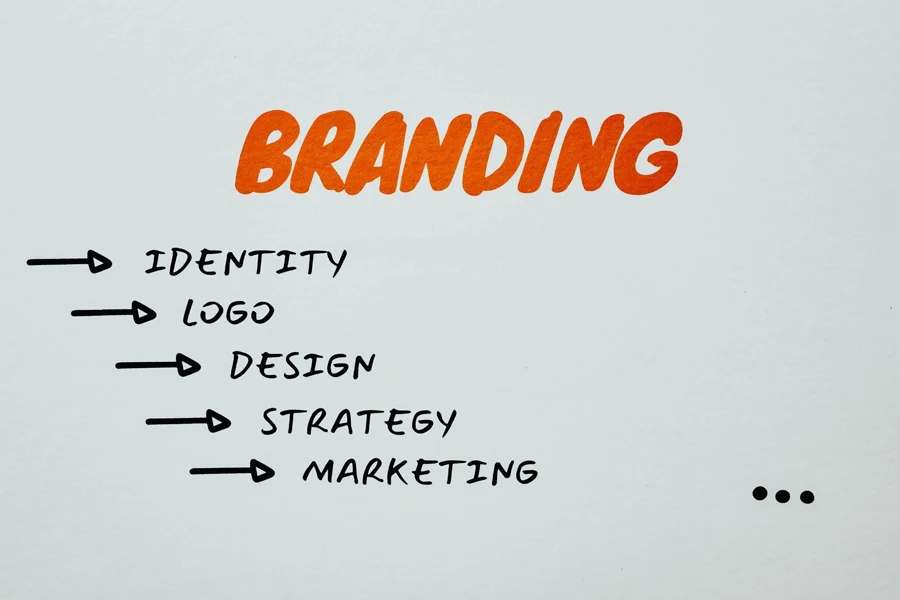Brand building is one of the key success factors of any company, especially in the present moment. Millions of startups emerge annually globally, so standing out from the competition is important. According to research, 46% of US customers are willing to pay more for a brand they trust.
This guide contains simple, step-by-step instructions that will assist you in developing a brand that captures your target audience’s interest and drives business growth.
Table of Contents
The need to build a strong brand
How to build a brand in 7 easy steps
Conclusion
The need to build a strong brand

It is crucial to understand how to create a good brand to start a business and make it successful. As approximately 305 million new startups enter the market annually, a good branding strategy helps one stand out. A successful branding process might help a business achieve its goals and objectives in the following ways.
- Build recognition
- Enhance trustworthiness
- Increase awareness and visibility
- Attract the right audience
- Boost income
How to build a brand in 7 easy steps

1. Market research

Brand building begins with a solid market foundation, requiring thorough market research to identify target consumers, competitors, and market trends before branding products. Defining your audience helps ensure your brand’s image, communication, and values align with the appropriate audience. Find below the steps to conduct market research.
- Ask people in your target market and identify the brands they use in your industry.
- Try shopping online or physically to understand how customers might peruse and purchase items.
- To identify your product or service’s direct and indirect competitors, type your category on Google.
- Some ways to monitor trends include using Google Trends, reading trade journals, and exploring social media.
2. Select your brand name and logo design

Choosing the right brand name is crucial since it is the business’s first point of contact with consumers. The name should represent the nature of your brand and be easily identified, relevant, and unique so that it can be easily remembered.
A well-designed logo is crucial for creating a brand identity. It must be flexible, easy to reproduce, and reflect the brand’s character. It must also be considered for its appearance on websites, social media, and printed materials.
3. Define your visual identity

Your visual identity is the tangible, aesthetic aspects of your brand related to its visual representation, such as colors, fonts, and images. Colors are one of the most significant element that can separate you from others. For example, we know Coca Cola is synonymous with red. Key visual elements should include the items listed below.
- Color palettes: Select colors appropriate for your brand image and the kind of company you have.
- Typography: Fonts should be clear and should fit the brand personality.
- Imagery and icons: Graphics must be in harmony with the rest of the brand.
4. Develop your brand voice
Brand voice is the way your business communicates with target consumers. It defines the tone, language, and personality your brand will use to communicate. A well-crafted brand voice should reflect your brand’s values, resonate with your target audience, and differentiate you from competitors. Whether formal or casual, humorous or serious, your voice helps build trust and connection, making your brand memorable and relatable.
5. Write your brand story
A brand story is the life story of your business and sometimes your personal story as an entrepreneur. It is effective in branding since it helps make your business more personal so that you can relate to customers.
A good, clear, and true story is the best way of doing this. Which part of your story will be appealing to your audience? How do you incorporate your brand values and mission into your story to communicate to customers?
6. Creating a catchy slogan
After working on your positioning and brand story, you should develop a catchy slogan for your business. A good slogan is short and memorable and has a lasting impact. Here are some ways to approach writing your motto.
- Use metaphors for emphasis.
- Use an easy-to-remember slogan like that of Nike: “Just do it.”
- Speak to your target audience in the language they understand, e.g., “Designed for the Dreamers.”
- Consider using rhymes, e.g., Glow with the Flow.
7. Utilize social media for brand building

Social networks are ideal for brand building and marketing and are easily accessible to millions of users. They help you engage your target audience, share your brand story, and reinforce the visual and verbal brand identity with customers. For any business, whether large or small, or even for a new business venture, social media such as Instagram, Facebook, and TikTok are a cheap means of reaching out to the public.
To make use of social media, you should do the following.
- Ensure consistency in all your brand’s social media accounts.
- Use the media platform that resonates with your target audience. For example, TikTok appeals more to youngsters, while LinkedIn may appeal more to intellectuals.
8. Consistency in the brand across different platforms
For a brand to be effective and unified, it has to be consistent. Your brand’s voice should always be consistent in how it is written, the visuals used, and the layout, whether you are designing a website, sharing content on social media, or creating a marketing email. As a result of your consistency, your audience will be familiar with your brand and, therefore, have confidence in it.
Conclusion
Brand creation from scratch requires careful planning and consistency. From market research to developing a strong visual identity, the logo itself, and the brand’s voice, all these stages are important for creating your brand’s identity. An established brand creates visibility, credibility, and customer loyalty, which will help your business succeed in a competitive world.
Create a relatable brand, interact with your audience, and follow the trends. Begin today by setting your brand identity and objectives, and future brand success will be assured. And finally, find more tips on how to grow your business on Alibaba.com.




